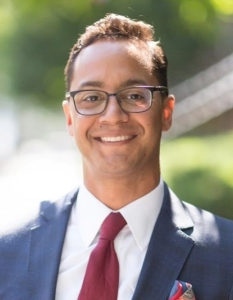Fair Funding Action Committee members Cody D. Miller, Jennifer Cavallaro-Fromm, and Dr. Kristin O’Neil contributed this commentary. The authors are speaking as individuals and not for or on behalf of any Board of Education of which they may be a member. For an Explainer about how NJ funds its schools, see here.
Because of significant statewide parent and taxpayer advocacy, along with the unwavering support of former Senate President Steve Sweeney, school districts Monroe Township Public Schools, Kingsway Regional School District, West Deptford School District and Camden County’s Lindenwold School District are finally seeing more of their fair share of New Jersey school funding.School District, West Deptford School District and Camden County’s Lindenwold School District are finally seeing more of their fair share of New Jersey school funding. This coalition achieved the historic passage of the 2018 law “S-2”, which required state aid levels, frozen for over a decade, to be re-allocated according to the School Funding Reform Act of 2008 (“SFRA”) over the next seven years.
New Jersey’s state aid is finite and must be distributed in a “zero sum” manner. Overaided districts received a total of $361 million over their legal entitlement in 2021. S-2 requires those dollars be adjusted for a district’s changes in enrollment. If a district’s student population grows, it now gets more aid, and if it declines in enrollment, it receives less, bringing fairness and equity to the process after years of severe and chronic underfunding.
S-2’s gradual improvement means severely and chronically underfunded districts are on a path towards receiving their fair share of state aid. Monroe’s aid increased $9.98 million to 86% of its SFRA entitlement, Kingsway’s increased by $7.35 million (74%), West Deptford increased by $1.88 million (90%) and Lindenwold increased by $3.98 million (74%). However, despite S-2’s improvements, approximately 64% of school districts across New Jersey remain underfunded due to the state’s lingering failure to fully fund K-12 education.
Making matters worse, legislators representing districts that justifiably had state aid reduced due to enrollment declines now want to create a “task force” to revisit school aid determinations. Their end game is to restore aid to superfunded districts under the pretext that SFRA 2008 is antiquated. They claim the formula doesn’t capture modern school expenses, despite the fact that it is lauded as one of the most progressive formulas in the country and is comprehensive and dynamic in response to a district’s student body needs, including costs of free-and-reduced lunch, English language learner populations, and special education costs.
These overaided districts, approximately 36% of all NJ schools, still receive more state aid than they should. Their opposition to S-2’s school funding redistribution is that their aid would be reduced from perhaps 150-200% of their state aid entitlement down to 100%. Districts now experiencing aid reductions from S-2 should take cost-saving measures to consolidate operations, reduce administrative overhead, and shift priorities to match their decline in student enrollment. They must adapt and restructure themselves with less money so that we can keep property taxes in check while funding our schools responsibly. The taxpayers of NJ can no longer afford to fund these bloated districts that have continually done nothing to reduce costs while student enrollment declines. Monroe, Kingsway, West Deptford, and Lindenwold had to learn to do more with less over the years, and these districts need to learn to do the same.
We should insist upon equity and fairness so that all schools receive their full funding, and taxpayers in long-suffering school communities like Monroe, Kingsway, West Deptford, and Lindenwold will not tolerate anything less. Our schools are finally receiving state aid in a fair and equitable distribution by a formula that makes sense for everyone. Any “task force” recommendation resulting in some districts receiving less than their fair share of state aid while other districts receive funding for students no longer enrolled must be rejected. The principle that all of New Jersey’s students are worth 100% of their state aid must not be abandoned when we are so close to rectifying school funding injustice once and for all.




